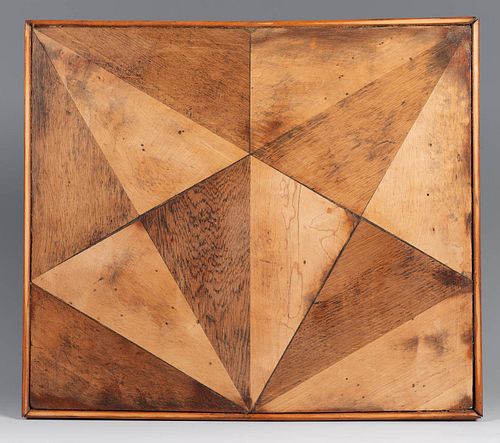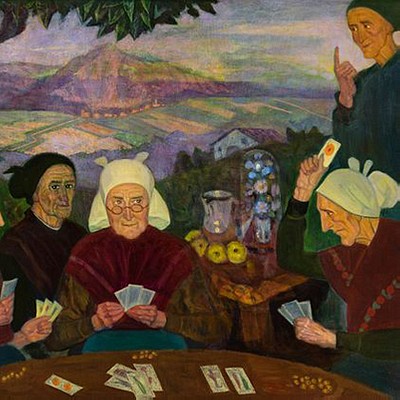ANTONI GAUDÍ (Reus or Riudoms, Tarragona, 1852 - Barcelona, 1926). Parquet section Casa Milà and La Pedrera, ca.1910. Design: Antoni Gaudí. In oak
Lot 66
About Seller
Setdart Auction House
Carrer Aragó 346
Barcelona
Spain
Setdart Subastas was born in 2004 and is currently the first online art auction in Spain with solidity, prestige and reliability guaranteed by our more than 60,000 users. Setdart has a young, dynamic and enterprising team ready to successfully manage the purchase and sale of art works through custom...Read more
Categories
Estimate:
EUR€6,000 - EUR€7,000
$6,451.61 - $7,526.88
Absentee vs Live bid
Two ways to bid:
- Leave a max absentee bid and the platform will bid on your behalf up to your maximum bid during the live auction.
- Bid live during the auction and your bids will be submitted real-time to the auctioneer.
Bid Increments
| Price | Bid Increment |
|---|---|
| EUR€0 | EUR€10 |
| EUR€200 | EUR€25 |
| EUR€500 | EUR€50 |
| EUR€1,000 | EUR€100 |
| EUR€3,000 | EUR€200 |
| EUR€5,000 | EUR€500 |
| EUR€10,000 | EUR€1,000 |
| EUR€20,000 | EUR€2,000 |
| EUR€50,000 | EUR€5,000 |
About Auction
By Setdart Auction House
Dec 14, 2021
Set Reminder
2021-12-14 08:00:00
2021-12-14 08:00:00
America/New_York
Bidsquare
Bidsquare : 19th & 20th Century Fine Art
https://www.bidsquare.com/auctions/setdart-auction-house/19th-20th-century-fine-art-7992
Gaudi, Sorolla, Torres Garcia, Maclet, TSUGUHARU FOUJITA, Benjamin Palencia Setdart Auction House sofia@setdart.com
Gaudi, Sorolla, Torres Garcia, Maclet, TSUGUHARU FOUJITA, Benjamin Palencia Setdart Auction House sofia@setdart.com
- Lot Description
ANTONI GAUDÍ (Reus or Riudoms, Tarragona, 1852 - Barcelona, 1926). Parquet section Casa Milà and La Pedrera, ca.1910. Design: Antoni Gaudí. In oak and white poplar. Intended for the living rooms of the houses. Measurements: 50 cm x 43,5 cm x 2 cm. The parquet is articulated in the form of hexagons, divided into twelve triangles and alternating two types of wood, oak and white poplar. By joining the hexagons and extending the radial divisions, a two-color mosaic unfolds. This parquet was placed in all the chambers of the noble area of the apartments of La Pedrera and was created by the Taller Casas y Bardés, the piece we present here is original and was replaced by the current parquet. Maximum representative of Catalan modernism and, therefore, of Spanish modernism, Gaudí is one of the most outstanding architects and decorators in European history. Already as a child he liked hiking, the direct contact with nature. Having stood out as a child for his drawings, he studied architecture at the Escuela de la Llotja and the Escuela Técnica Superior de Arquitectura de Barcelona, where he graduated in 1878. With his first major commission, the Casa Vicens, Gaudí began to acquire renown, and to attract increasingly larger commissions. In 1878 he exhibited at the Universal Exposition in Paris a showcase made for the Comella glove shop. This piece, with its modernist and functional design, impressed the industrialist Eusebi Güell, a key figure in Gaudí's artistic biography. In fact, Güell was, in addition to being Gaudí's great friend, his main patron, and commissioned some of his most outstanding works, such as the Park Güell. In 1883 he accepted the commission to continue the work on the Sagrada Familia; Gaudí totally modified the initial project, and this construction became his masterpiece, on which he worked until the day of his death. This project was followed by other important commissions, such as the episcopal palace of Astorga, the Batlló and Milá houses and the restoration of the cathedral of Palma de Mallorca. In 1910 the first exhibition dedicated to Gaudí was held at the Grand Palais in Paris. After his death, important retrospectives of the architect were held, including the one at the MOMA in New York, his first major international exhibition, which took place in 1957. Since the mid-twentieth century, Gaudí's appreciation has been increasing, culminating with the proclamation of several of his works as World Heritage Sites by UNESCO in 1984 (Park Güell, Palacio Güell and Casa Milá), and 2005 (crypt and apse of the Sagrada Familia, the houses Vicens and Batlló and the crypt of the Colonia Güell). Gaudí's designs for furniture and decorative arts can currently be admired at the Musée d'Orsay in Paris, the MOMA in New York, the National Gallery of Art in Washington D.C. and the National Museum of Art of Catalonia, as well as in his House-Museum in Park Güell.
- Shipping Info
-
In-house shipping available. Please inquire at admin@setdart.com.
-
- Buyer's Premium



 EUR
EUR CAD
CAD AUD
AUD GBP
GBP MXN
MXN HKD
HKD CNY
CNY MYR
MYR SEK
SEK SGD
SGD CHF
CHF THB
THB













